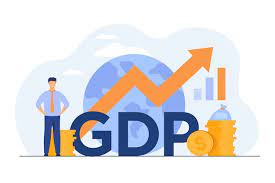Following the Gross Domestic Product [GDP] growth improved marginally by 20 bases points from 2.31 per cent in the first quarter of 2023 to 2.51 per cent in the second quarter, the Centre for the Promotion of Private Enterprise (CPPE) has remarked that the economy slowed amid shocks from current economic reforms which impacted energy prices and the naira exchange rate.
The center viewed that the adverse impacts of the reforms were disproportionately higher than expected.
Director of the centre, Dr Muda Yusuf, who noted that a rebound of the economy is expected in the medium to long term as current distortions in the economy are corrected.
Meanwhile, Yusuf admits there is an immediate positive outcome which is the marked improvement in the fiscal space of governments at all levels.
“The Nigerian economy is still going through corrective reforms to remove some fundamental distortions and restore the economy back to the path of recovery and growth.
“But implementing the reforms is an arduous task. The trade offs are profound and the social impact has been devastating. Given the inevitability of the reforms, the implementation calls for a delicate balancing act and strategic sequencing to ensure an inclusive economic transition.”
He opined that dealing with the issues of insecurity, spending priorities, corruption, productivity and competitiveness, regulatory environment and macroeconomic stability are paramount to rebuilding the momentum of economic growth and development.
“Meanwhile, the dominance of the non-oil sector was underscored by the report. The sector contributed 94.7 per cent to GDP while the oil sector contributed 5.3 per cent. The service sector continued to maintain its dominant role in the economy with a contribution of 58.4 per cent of GDP. The structure of the economy continued to reflect its vulnerabilities, especially the challenges of productivity and competitiveness of the real economy.
The Q2 GDP growth fell short of the sub-Sahara projected average of 3.1 per cent for 2023; but better than projections for the Euro Zone of 1 per cent and the United States of 1.8 per cent.
“These are sectors that recorded better growth performance in the second quarter than the first quarter. These sectors include Quarry and Minerals which grew by a staggering 39.2 per cent; financial institutions 29.2 per cent; Rail Transport, 16.9 per cent; Insurance, 7.3 per cent; Trade, 2.4 per cent; Construction, 3.5 per cent; Manufacturing , 2.2 per cent; Education, 1.4 per cent; Real Estate, 1.9 per cent; Chemical and Pharmaceutical, 6.4 per cent; Food and Beverage Sector, 4.3 per cent; Cement 3.3 per cent; Plastics, 2.7 per cent; Iron and Steel, 2.3 per cent; Agriculture, 1.5 per cent; Fishing, 0.29 per cent.
“These are sectors that recorded positive but lower growth than in the previous quarter. These sectors include ICT, 9.7 per cent; Air Transport, 4.3 per cent; Crop Production, 1.8 per cent; Wood and Wood products, 2.4 per cent; Paper and Publishing, 1.4 per cent; Water Transport, 5.4 per cent;
“These are sectors that recorded negative growth in the second quarter. The output in the sectors contracted because of the prevailing economic and investment climate conditions. Road transport sector recorded the biggest contraction of 55 per cent in the second quarter. Other sectors that contracted include Coal Mining which contracted by 15.7 per cent; Motor vehicle Assembly, 3.9 per cent; Music and Motion Pictures, 2 per cent.
“These are sectors that contracted in the first two quarters of 2023. They are the sectors that have been stumbling because of macroeconomic , structural or policy issues. Oil refining contracted by 35.6 per cent; Livestock, 2.3 per cent; Crude Petroleum and Gas, 13.4 per cent; Textile, 4.4 per cent. Growth in these sectors continued to be subdued by heightened inflationary pressures, exchange rate volatility, spiking energy cost, insecurity and the political economy of the oil and gas sector.
SOURCE: THISDAY






